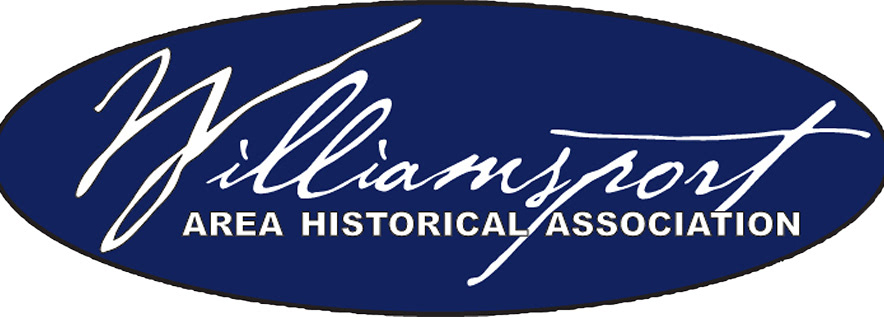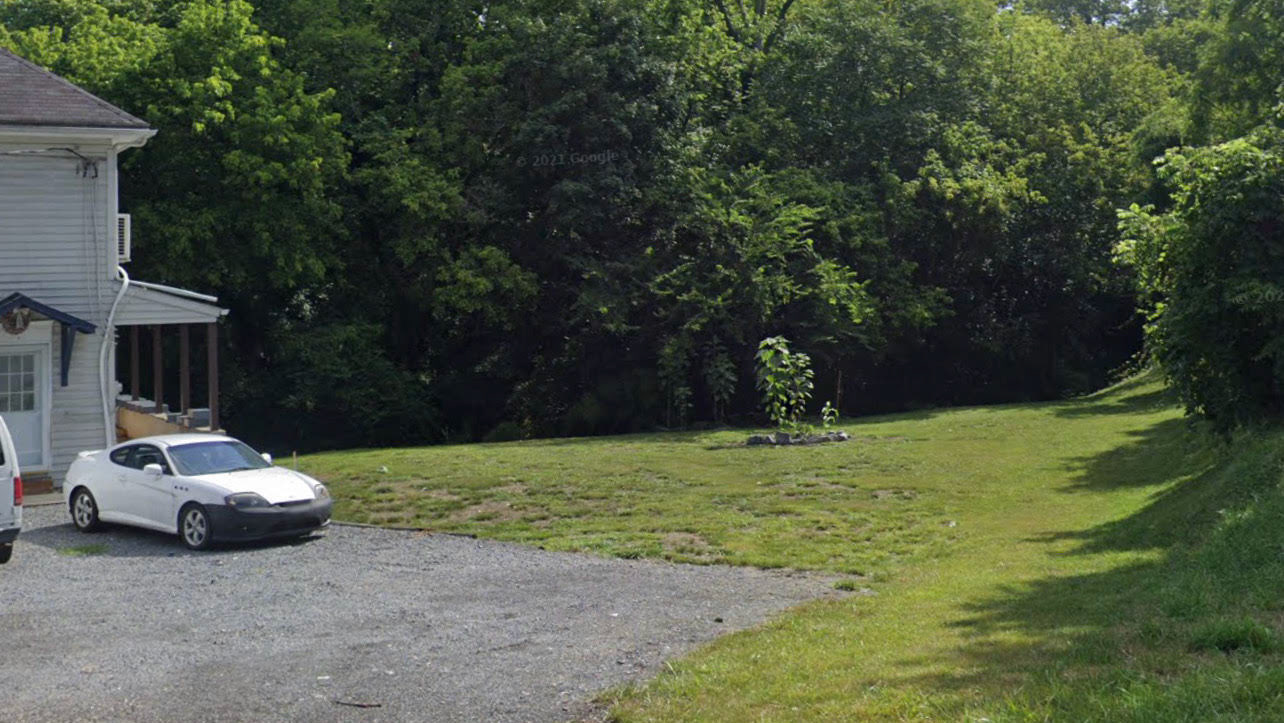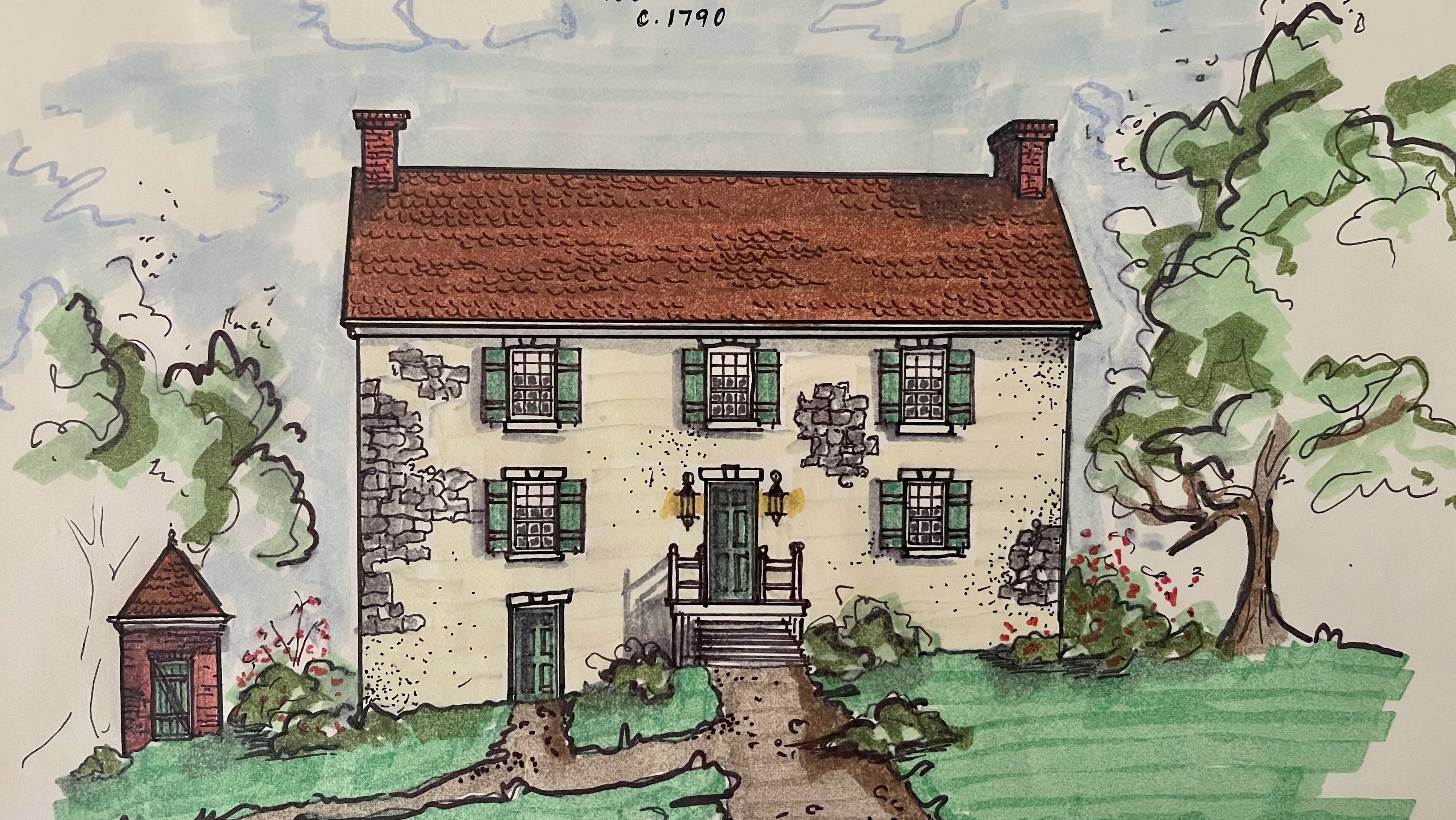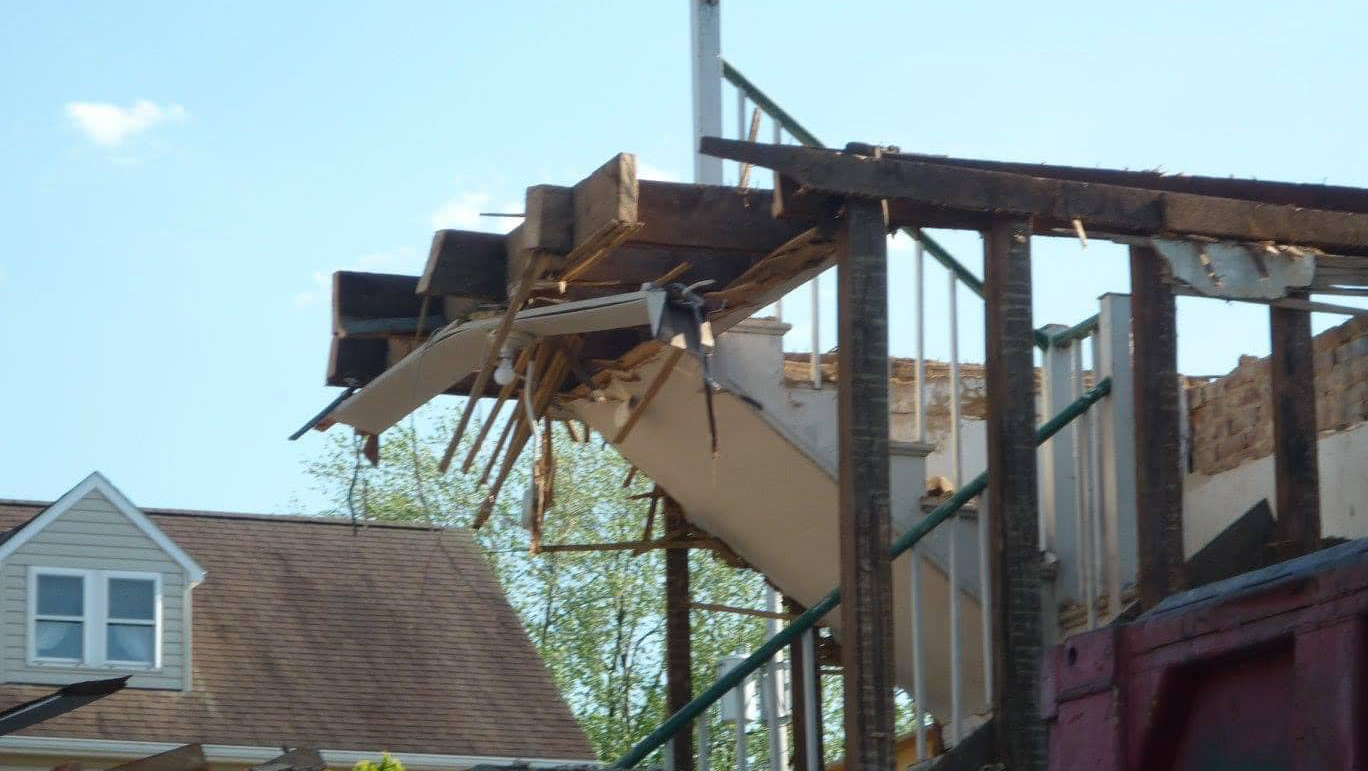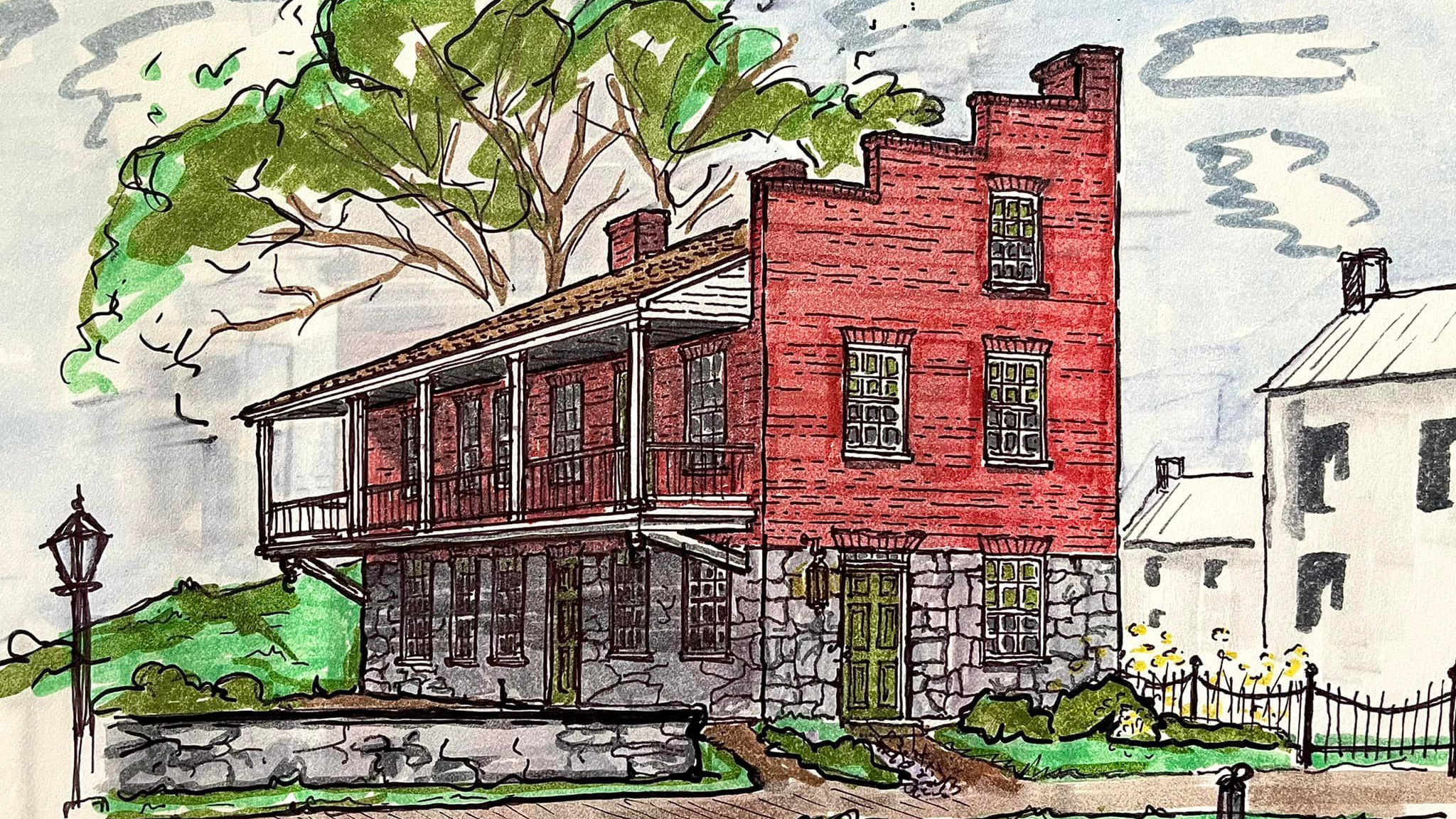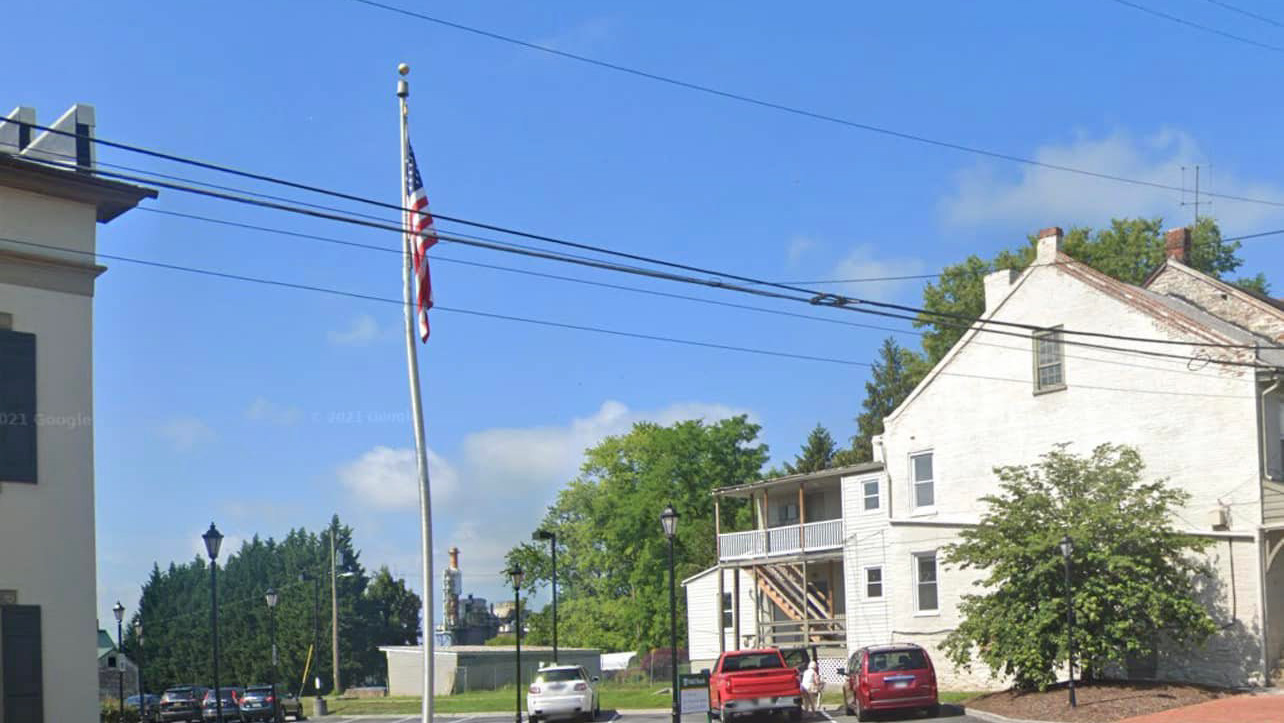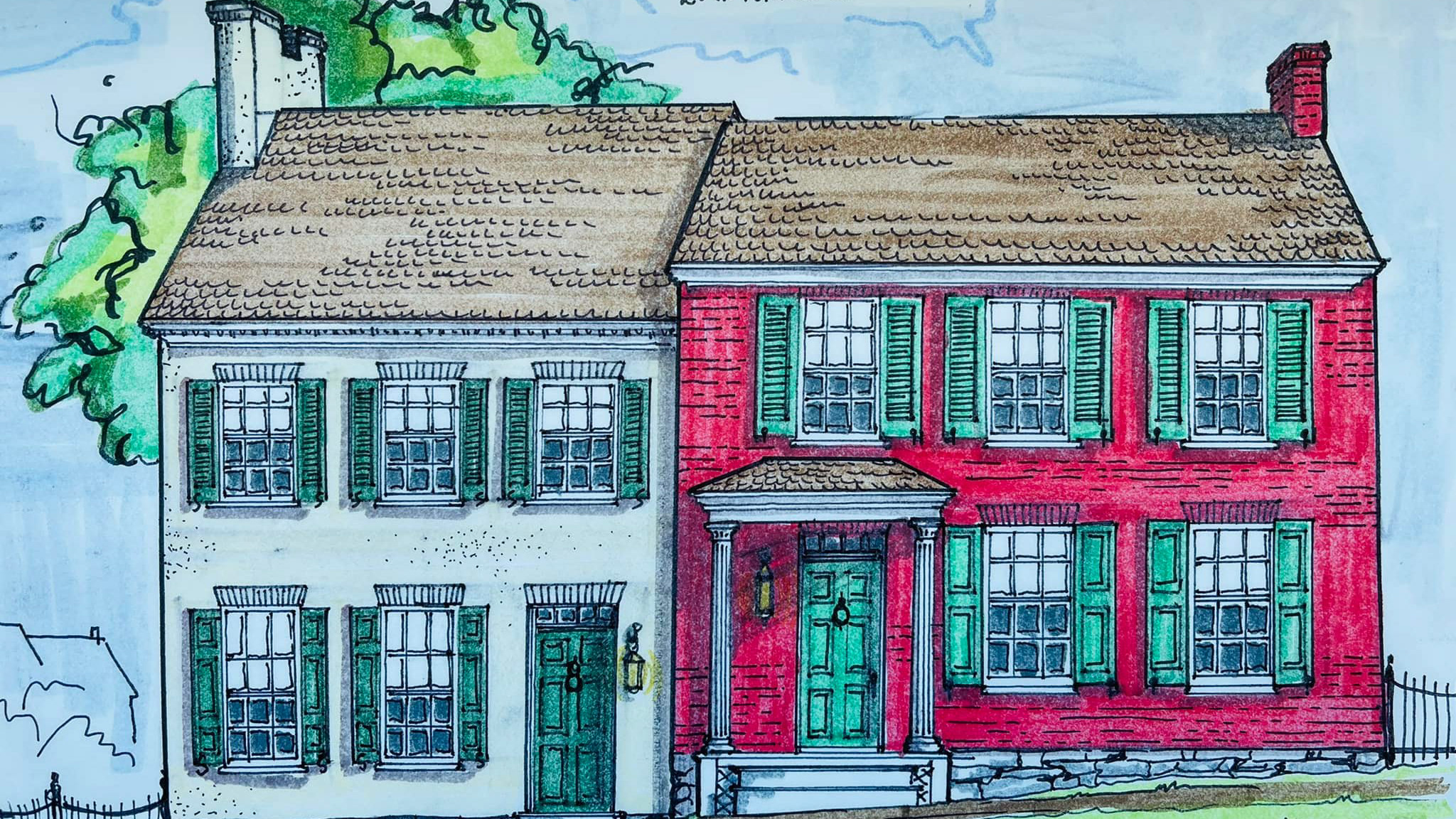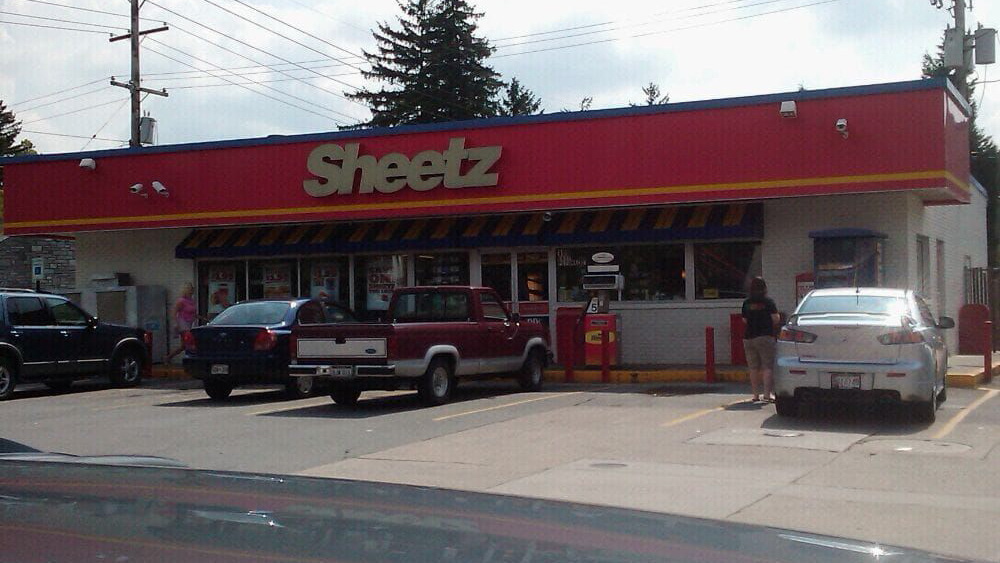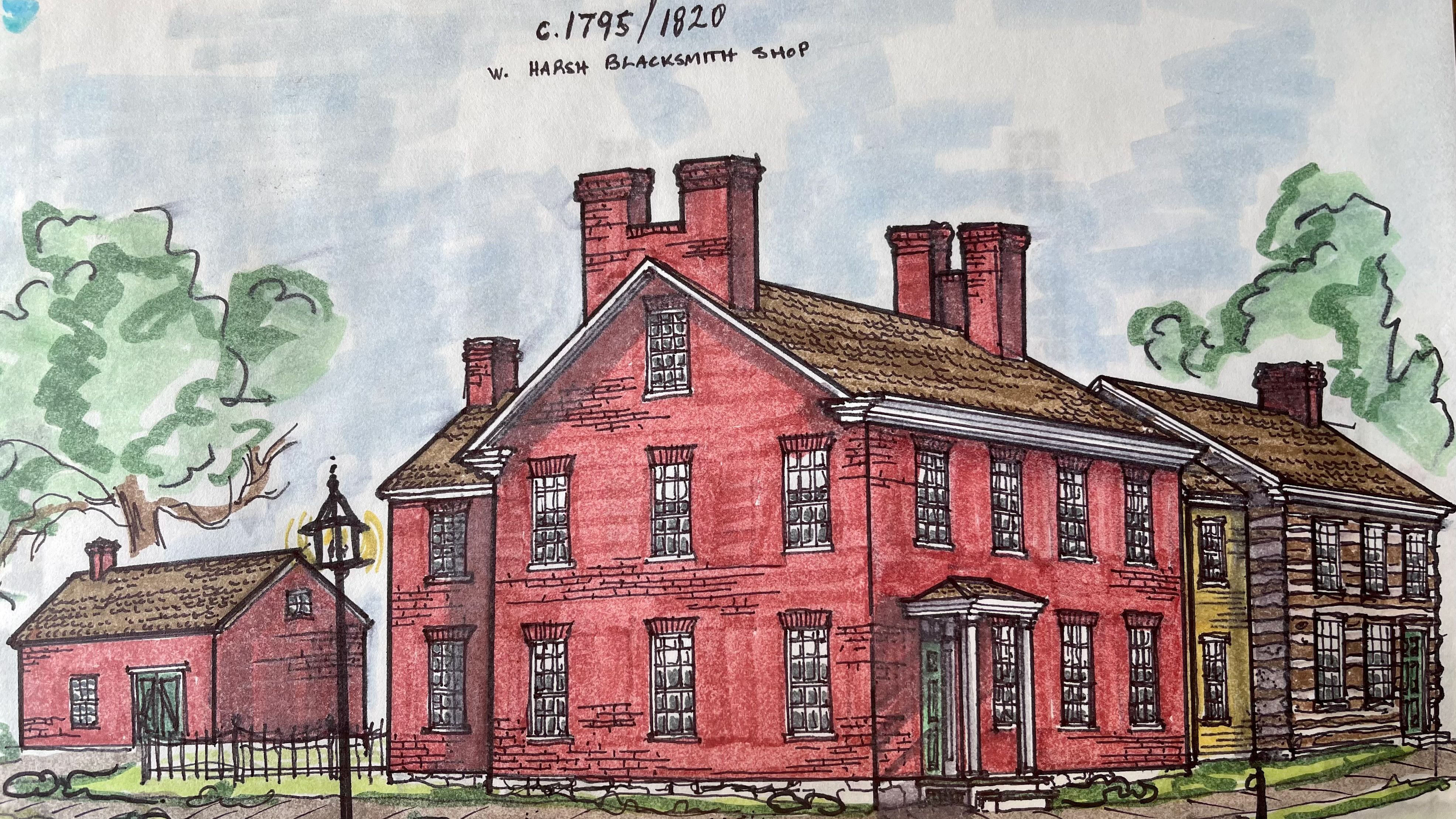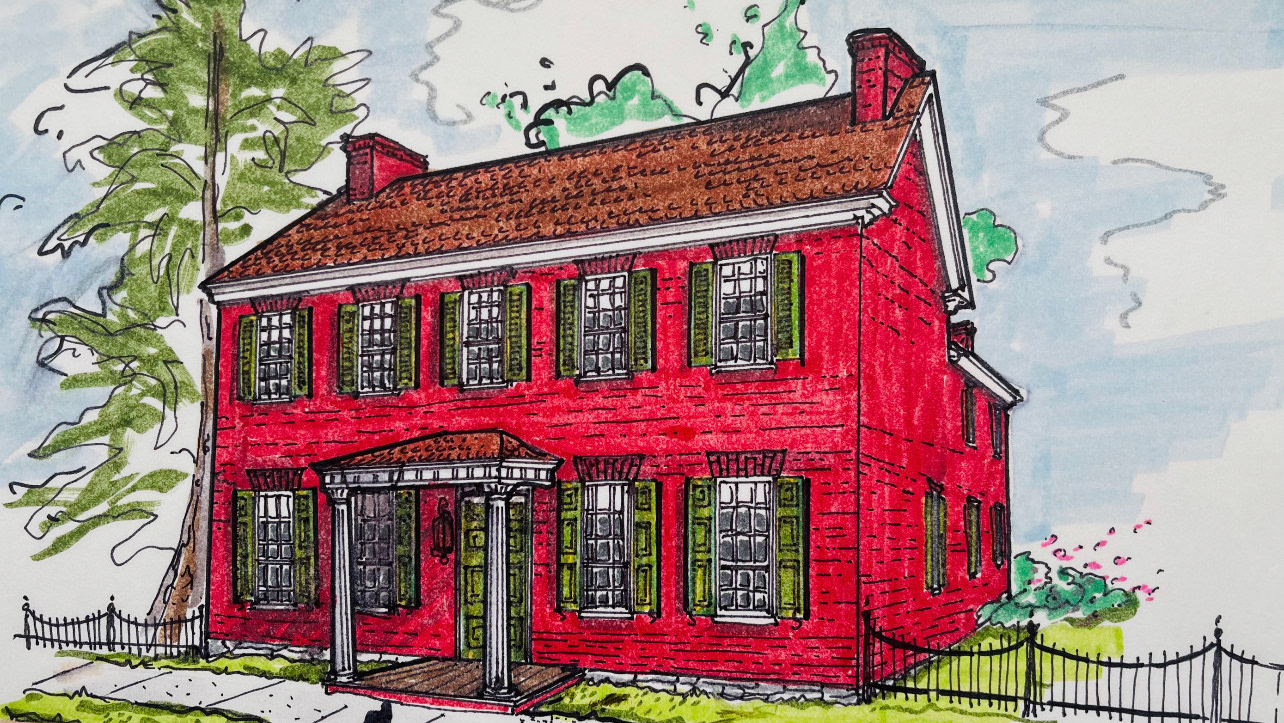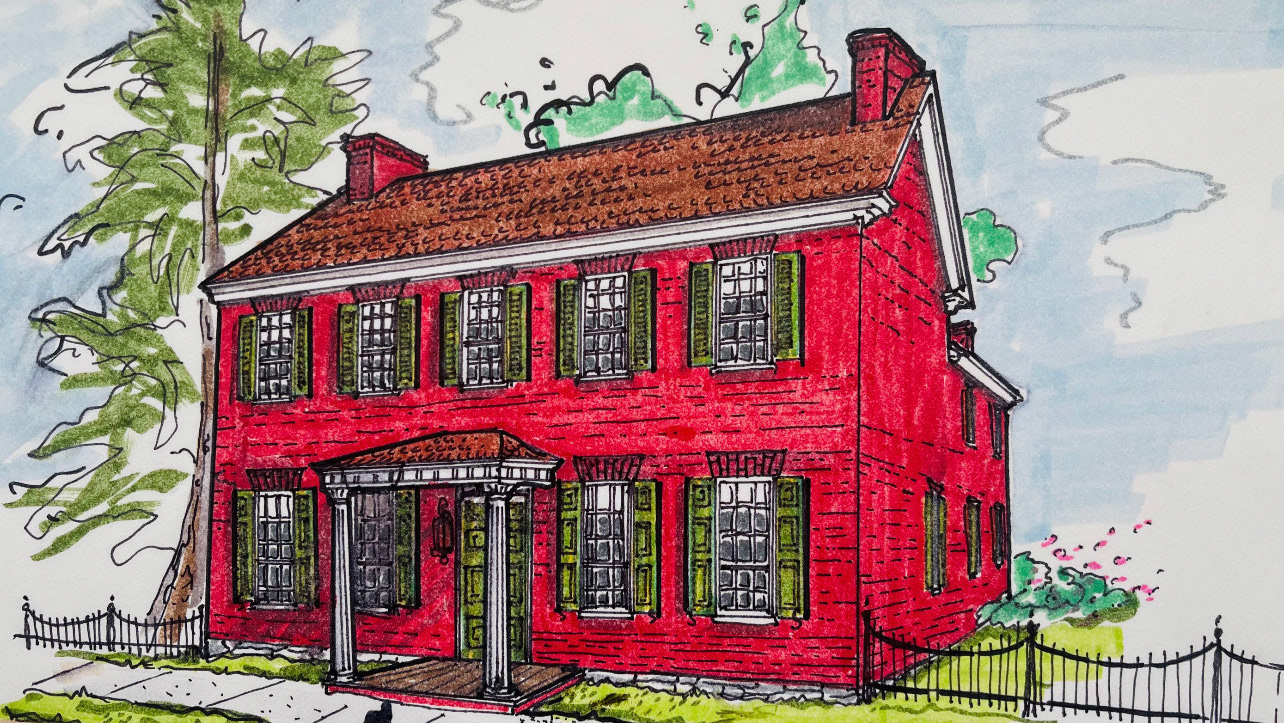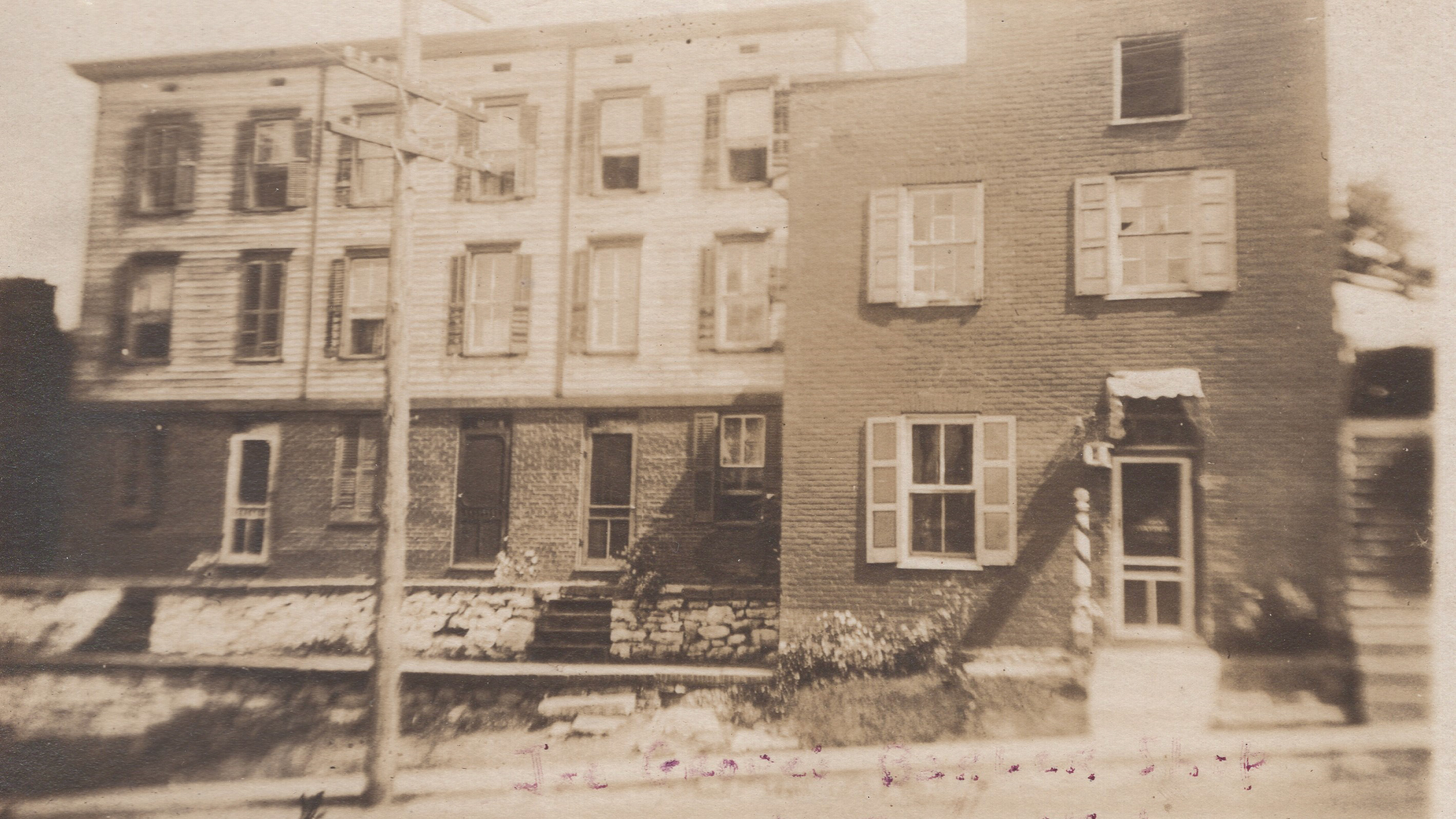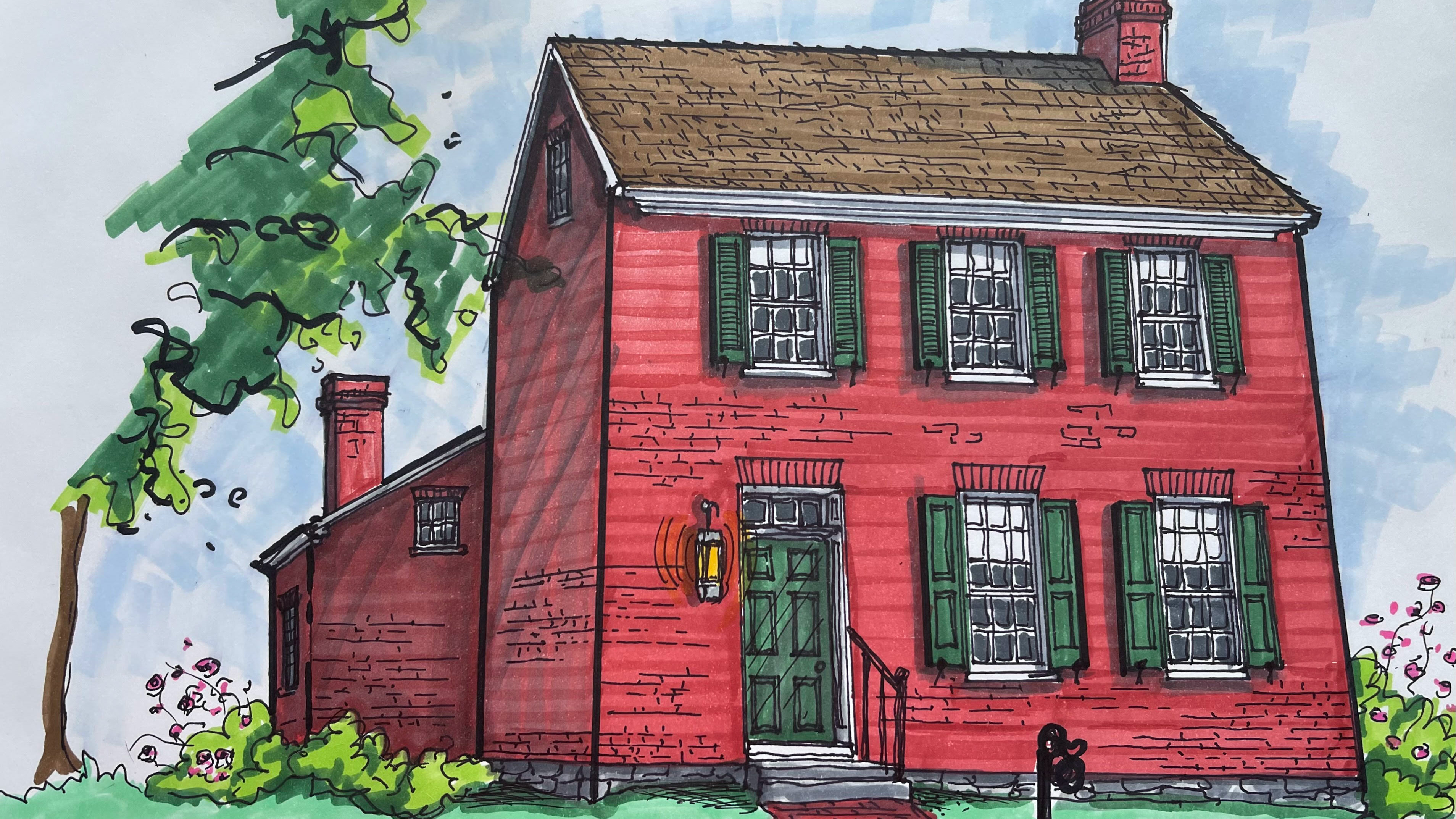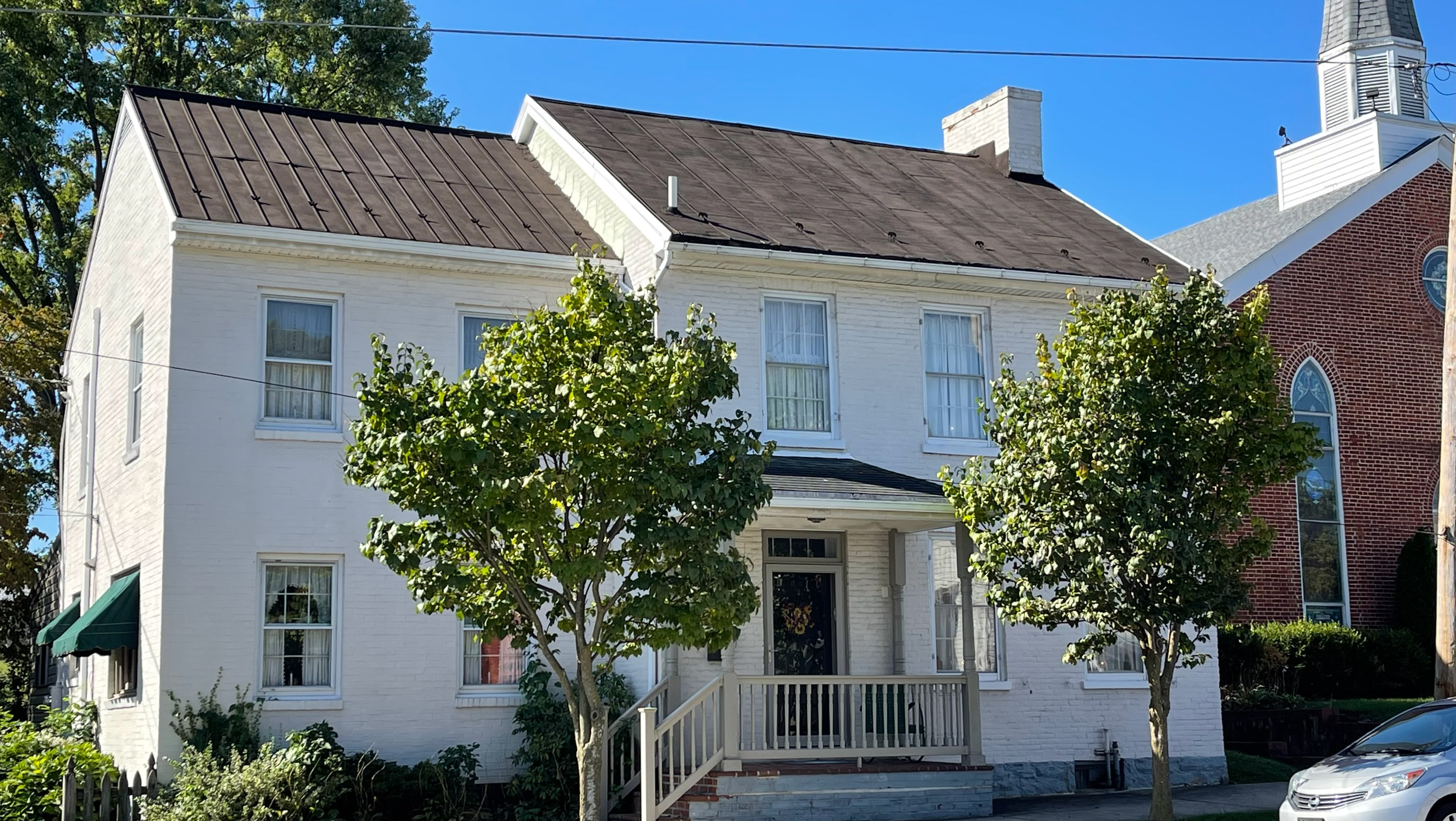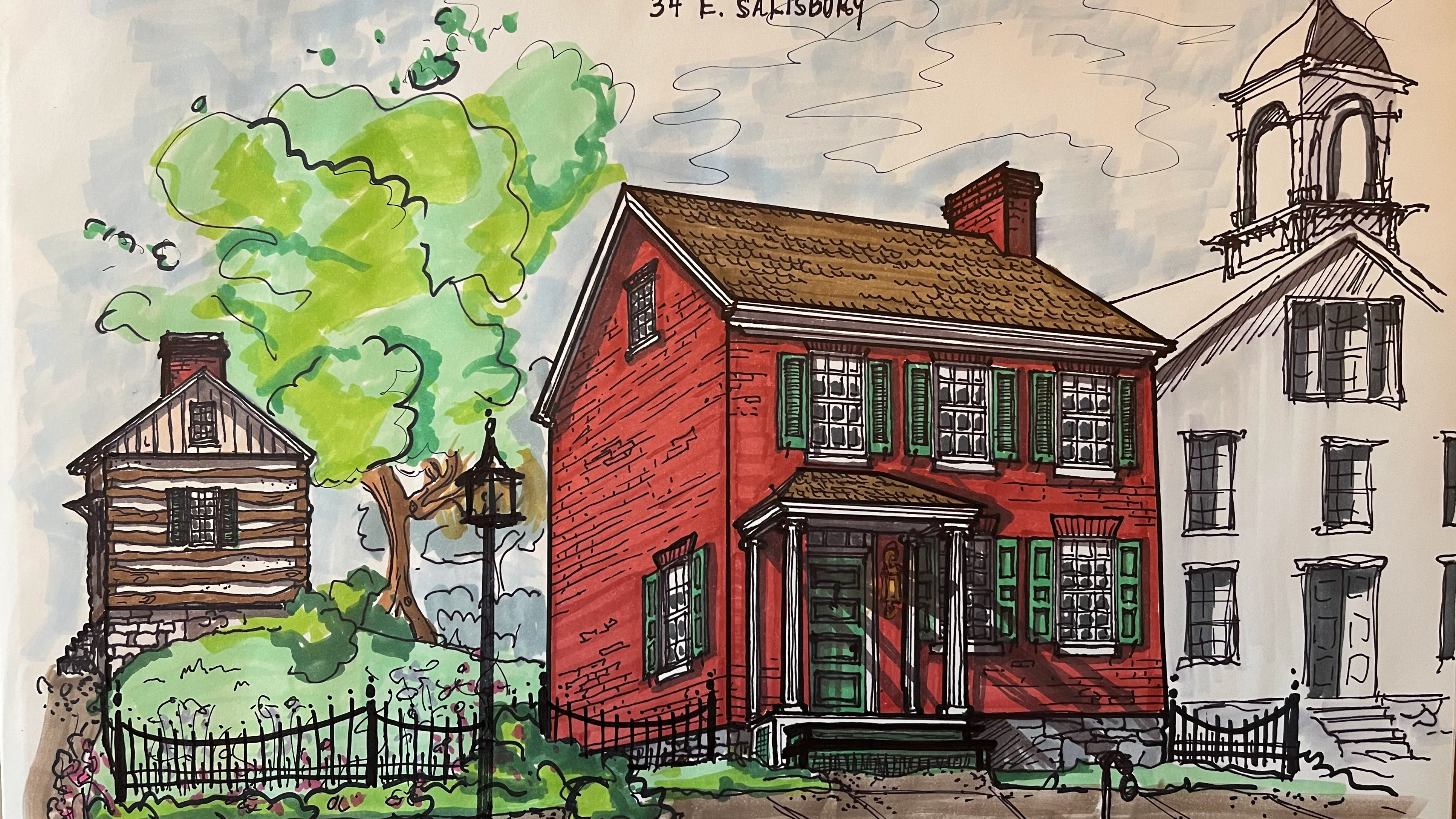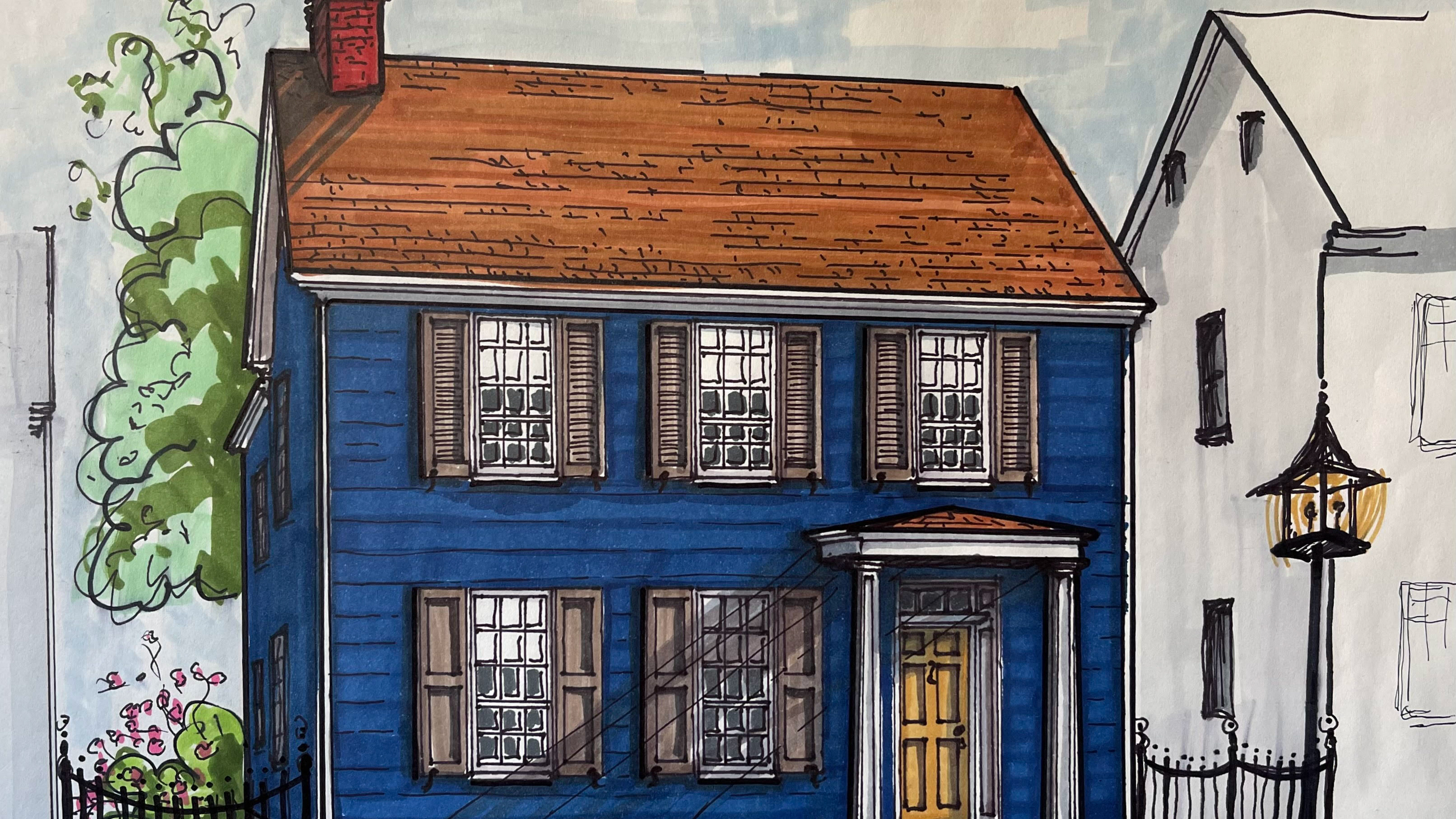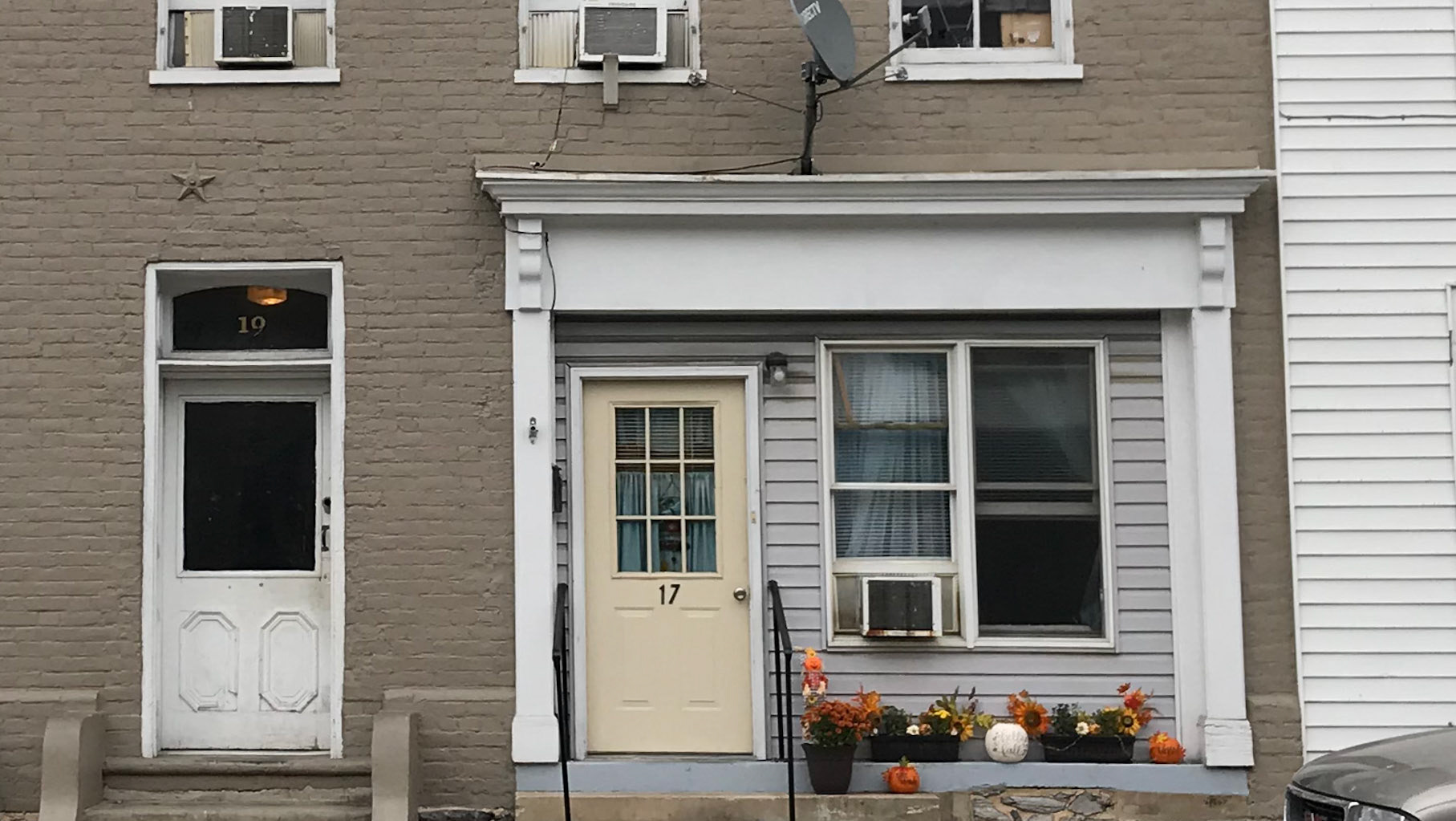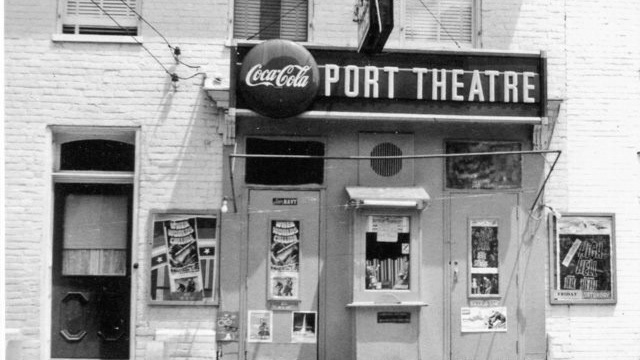A lovely three-bay storybook stone cottage with a later Victorian porch sits along the east side of North Artizan Street on original lot 184 behind the Williamsport Pharmacy. The house is one and a half stories high at the street facade but two and a half at the rear elevation. The east side facing Byron Park has two full-length gallery porches. A more recent owner added a shed-style dormer to the roof along the street side of the house.
The roof retains old, standing seam metal. The trim is black and white, and a stylish "haint blue" color accents the porch ceilings. Hinge pins are still at the windows where shutters once hung, and thin wooden lintels span the openings. There were once two large chimneys at the north and south gables, built within the walls, but one was altered and one taken down altogether. The original wide, banded eaves with returns still proudly decorate the roofline. The doorway in the center bay retains its original paneled jam. Inside this charming home, the main hall still boasts its original staircase and railing; most rooms still have random-width pine floors. Mantlepieces, unfortunately, were removed long ago, but the chimney stacks remain.
Henry Brooke/Brooks was a blacksmith. He was born about 1807 in Pennsylvania, while his wife Eliza was born the same year in Maryland. It is unclear when they were married, but Henry and his wife Eliza moved to Williamsport sometime around 1847 with their five children, an older woman named Henrietta (perhaps a mother-in-law) and Henry's brother Michael, a teacher.
They began buying properties along Artizan and Vermont Streets right away. Henry purchased lots 182 and 183 at the northeast corner of Salisbury and Artizan, where an existing blacksmith shop and stone cottage stood. He promptly sold Peter Wolf fifty dollars' worth of older Blacksmith tools and then turned around and took a mortgage to buy new ones from Mr. George Spangler for sixty dollars. In 1848 Henry and Eliza leased lot 184 from the Williams Family and immediately bought sixty-five dollars' worth of building materials on credit from lumber dealer Adam Shoop (owner of the Banking Mansion). The Brookes soon employed Irish born contractor John Conley to build their small but stylish stone house with materials purchased from both Shoop and Conley.
The Brooke Family must have over-extended themselves. In 1849, Conley put a lien against the property for $224.12, accompanied by a detailed list of materials such as moldings, windows, facia, etc. This unprecedented list, along with the list from Adam Shoop gives us an exact list of what it took to build a stone house in the early 19th century, an exceedingly rare look into early building practices. Conley won the suit, and the Brooke Family remitted the debt. Over the next few years, financial problems persisted, and the lots along Vermont were sold off for low prices. Henry and Eliza tried to keep going and mortgaged the Blacksmith Shop and other possessions, taking loans from members of the wealthy Long family of Downsville. Eliza died in 1858 and a few years later Henry finally lost the properties once and for all, including their lovely stone house. In an 1865 equity case, the house was assigned to the Long Family for debts owed. The Long Family sold the property to Martin Van Buren Harsh later that same year.
The Harsh Family is one of Williamsport's oldest and most prominent families. The Harsh's have been in Williamsport from just about the beginning. Martin Van Buren Harsh's (named after President Van Buren) grandfather, Jacob Harsh, was born in the Conococheague settlement area, later to become Williamsport, in 1765 and was killed by Indians in 1803. It is still unclear whether Martin and his wife Emily (nee' Snyder) Harsh lived in the stone house then, but we know that Martin opened a blacksmith shop across the street (where the Sheetz building exactly sits now). Harsh's blacksmith shop was established in the old brick stable behind the Temperance Hall (c.1820), which was tragically demolished to make way for the Sheetz gas station.
Old photos from the 19th century show the Harsh men standing in front of the shop along Artizan Street. Martin’s brother Nelson Harsh opened the Potomac House (not to be confused with the Potomac Hotel at Conococheague and Potomac Streets) in the ancient 18th-century log house just around the corner from the Blacksmith shop alongside the Temperance Hall on Potomac Street. Sadly, that building is also now demolished for Sheetz.
The Harsh Family sold the old stone house in 1998 after owning it and keeping it immaculate for 133 years. The Harsh Family still calls Williamsport home to this day, having run many businesses and having been involved in politics.
Today the house serves as two apartments, but the new owner keeps the old place in fine shape. The Brooke Family's old stone house is still among Williamsport's most charming old homes and is one of less than ten remaining original stone dwellings within the town limits.
Williamsport has many beautiful old buildings but none to spare. We here in Williamsport are grateful to the property owners who care about our brick, stone, and wood heritage. Williamsport's history is important and should be protected and respected.
